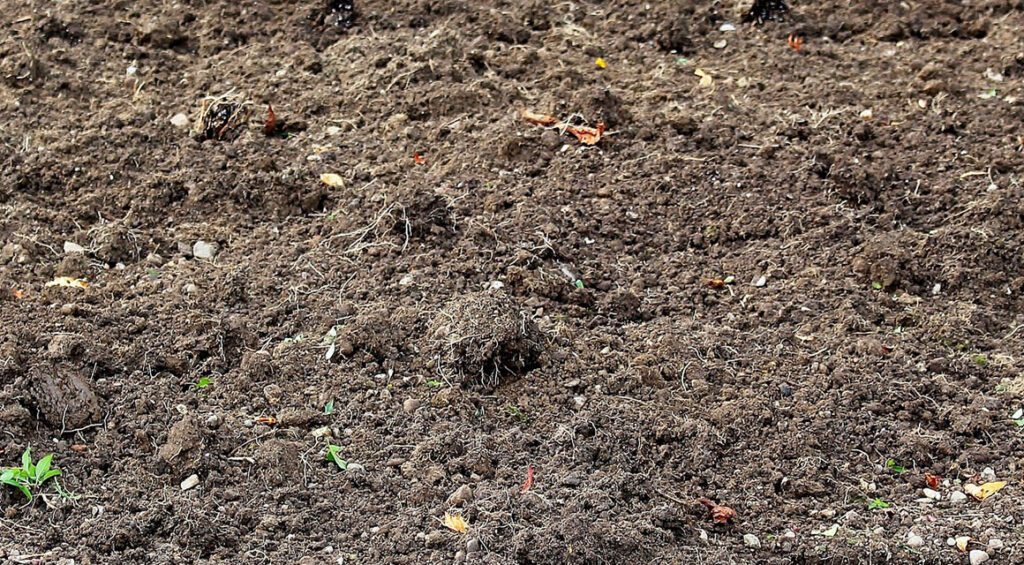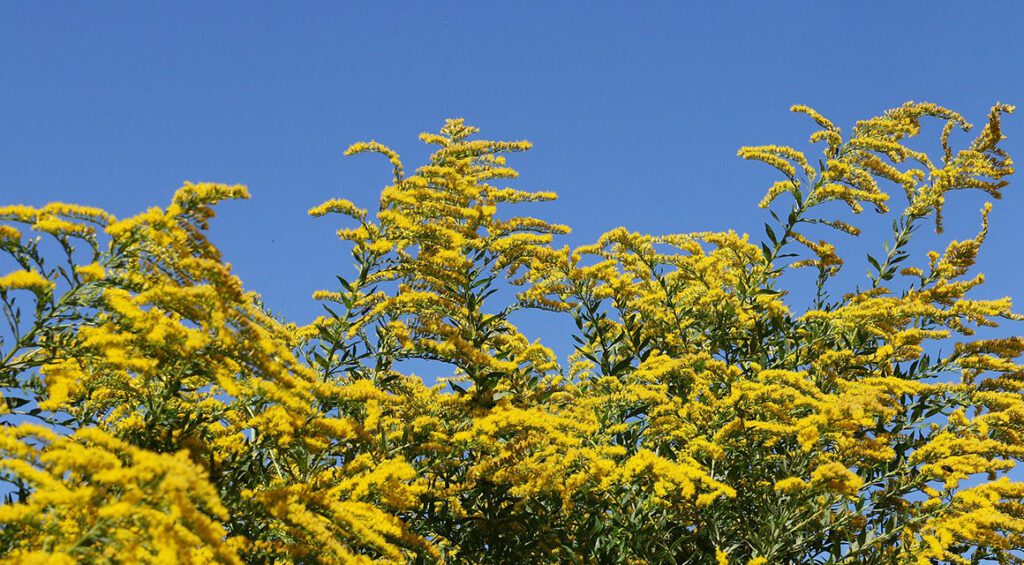If you have a dry (sandy) soil in your garden, then it can be difficult to select the right hedge. Not every hedge plant can grow well in a dry soil. Nevertheless, it is quite possible to find a suitable hedge for a dry soil. If you pay a little more attention to your garden soil and use the appropriate hedge plants, then you too can realize wonderful garden borders in your garden. We will be happy to inform you about how to form such a pretty hedge on a dry ground.

Contents
Prepare the garden soil for the hedge
A dry soil is usually quite low in nutrients. However, most hedge plants prefer a nutrient-rich garden soil. Fortunately, you can improve the living conditions of your new hedge plants if you prepare the garden soil well before planting. Therefore, first start to improve the soil in your garden with compost. If you have a poor quality sandy soil, it is important to make it richer in humus. This will benefit your hedge later. It’s best to start improving your soil before you plant your new hedge in the ground.
If you mix a humus layer with the garden soil, your garden soil will not only get important nutrients: it is also extremely important for the water balance of the soil that the soil has enough humus and organic material. In addition, a garden soil remains loose and well-drained if you regularly mix it with humus. But also fresh plant soil should always be used when planting a new hedge. In fact, we always advise this if you have a nutrient-poor, dry sandy soil. By using plant soil, your new hedge plants will then also root much better and faster.

What hedge plants to choose?
Of course, not every hedge plant is suitable for a dry garden soil. Nevertheless, there are many hedge plants that can grow almost anywhere. However, there are also plants that have certain conditions for the garden soil. One popular hedge plant that can grow well in dry garden soil is the copper beech (Fagus sylvatica). This hedge plant prefers slightly moist soils, but wet soils should be avoided. This is also true for privet. Privet was often used in new housing estates in the 70s. And such housing was often located on dry, sandy land. So the privet proved back then that it can grow on dry soils.
Barberry, butterfly bush, encroaching hawthorn and Japanese larch can also be planted exceptionally well on sandy soils. However, do you prefer evergreen hedges in the garden? This is also possible. Cherry laurel, Griselinia littoralis, creeping spindle and oil willow do well on dry garden soils. In addition, many conifers are not at all picky when it comes to garden soil. So a particularly drought-tolerant conifer hedge can be planted well in a sandy soil. Thuja ‘Brabant’ is a good example of this, as it is a popular hedge plant that can grow well in a sandy soil.
However, during prolonged drought conditions, you should provide your hedge with extra water. Your soil should also be regularly enriched with humus to keep it healthy: this allows moisture to be better retained by the soil. It is also important that you maintain your hedge properly. Of course, this is always important, but if the soil is dry, it is especially recommended. If you take these factors into account, then nothing can really go wrong. Do you have any questions now or do you need our advice? Then get in touch with us. Our experts will be happy to help you find suitable hedge plants for your garden.
To keep the plants and the garden soil in top shape.
A dry soil needs more attention than a permeable, humus-rich soil. Actually, many plants can grow well in humus-rich soil. In winter, you should therefore pamper your garden soil with a layer of compost. Use a rake to do this, which you can then also use to carefully mix the compost with your garden soil. You should repeat this again at the beginning of spring. This will keep the soil rich in humus at all times. You can also use leaf soil or old cow manure, as these materials also contain a lot of humus. Also, fertilize your hedge twice a year and then use an organic garden fertilizer or a hedge fertilizer.
If the soil is dry, adding a layer of mulch to your garden soil can also be a good solution. In fact, if you cover the garden soil where your hedge is growing with a natural layer of mulch all around, then the nutrients in the soil and the soil moisture can be better stored. A layer of mulch can also be good at controlling weeds. Mulching the garden soil also makes the soil much more airy and loose at the same time. Well-drained and loose soil is then also much more beneficial for your plants. You can use different materials for mulching. For example, use wood chips, straw, tree bark, grass, leaves, cocoa shells or a proper layer of compost.
A layer of mulch will also ensure that your plants and soil are protected from frost and stay in tip-top shape. This is especially handy in the winter. If you follow this advice, you’ll enjoy your garden for a long time to come, even if it has dry, nutrient-poor soil. Why not take a closer look at our website and be inspired by our pretty hedge plants. For each shrub and tree, our website lists specific characteristics that can help you make your selection. Now we wish you a lot of fun in choosing a beautiful garden hedge!

